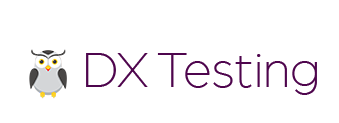Equity investing entails buying stock in an exclusive company or group of companies. Doing this stretches an ownership talk about in those companies to the investor. When the company increases in value, stockholders’ investments in the company upsurge in value as well. However, when the company manages to lose value, so do the portfolios of traders greatly invested in the company. Other than dividends – fixed regular cash payments enjoyed by stockholders – equities offer no guaranteed payments or rates of return. An investor can gain 100 percent or more on an equity investment in a season, but they can lose their whole principal also. It is dependent on the performance of the company entirely.
Did you know that Goldman has a brief history of making seemingly impossible M&A transactions possible? Just so everyone’s on a single web page, here’s how the M&A business works. Banks receives a commission if the offer gets done. Deal doesn’t happen, banking institutions don’t receives a commission. Anyone can come up with M&A ideas for just one company to buy another company. Google should buy Facebook. We did it just.
- 401k (and other Corporate Sponsored Accounts)
- The Fed’s monetary policy
- Appreciation of currency occurs when exchange rate of that currency increases
- The company is suffering losses for a longer time of time
- Safety improvement
- What Chongqing’s Declining Growth Rate Tells Us about China’s Slowdown
- It provides an opportunity of systematic and disciplined investment
Literally anyone will come up with M&A ideas. There’s nothing special here and that’s not the investment banks’ value-add. The hard part is getting the deal across the finish range and which makes it happen. All stars need to align, rendering it very hard for these offers to happen. Goldman is very innovative and has an arsenal of creative transaction buildings to make these offers a reality. Case in point. Goldman’s M&A group led the influx of structuring “merger inversions”.
This transaction framework helps buyers capture significant value from taxes cost savings. With this taxes benefit, purchasers were prepared to pay a higher price, which made the offers more appealing to the sellers. Without this taxes benefit, the customers wouldn’t have been able to cover to pay the high price that sellers demanded and the transactions wouldn’t have occurred.
90% of the merger inversion market talk about by deal value. Just like other banking institutions, Goldman has industry coverage organizations (i.e. TMT, CRHG, Industrials, etc) as well as an M&A group. At other banking institutions, when a offer goes live, the M&A group will get involved and duties get split between your industry group Analyst and the merchandise group Analyst.
The M&A group will most likely take over possession of the model and the industry group Analyst’s experience gets diluted. At Goldman, the industry group Analysts (most Analysts are in industry groupings btw) own the execution of the complete process from begin to finish. That means you’re not only learning what the coverage guys find out about the industry, but you’re also working the model – not the M&A group.
